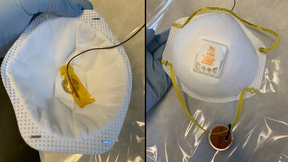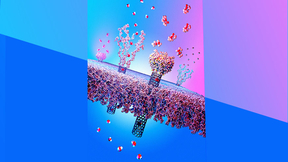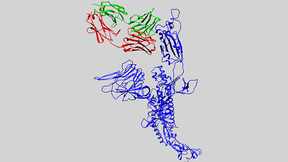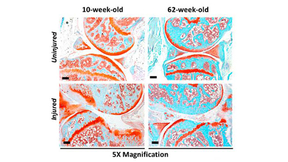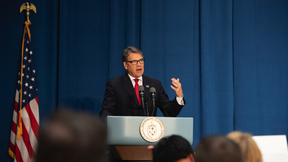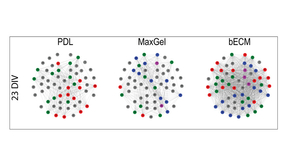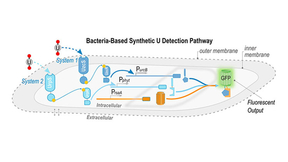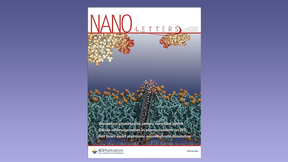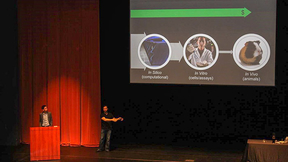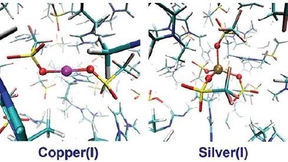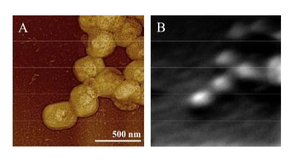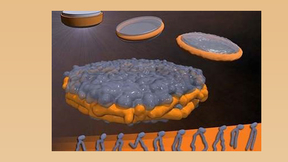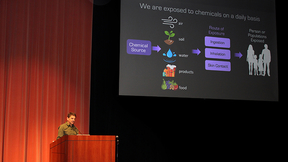Back
Two Lawrence Livermore National Laboratory (LLNL) researchers who have worked for more than eight years to develop a tularemia vaccine are part of a three-institution team that has been funded to bring their candidate to readiness for use. The two biomedical scientists, Nick Fischer and Amy Rasley, will collaborate with scientists from the University of New Mexico and the…
Lawrence Livermore National Laboratory (LLNL) researchers are studying ways to safely and rapidly remove viral threats from N95 respirators, without compromising the device’s fit and its ability to filter airborne particles, so they can be reused. As seen during the COVID-19 pandemic, a shortage of personal protective equipment, including surgical masks and respirators,…
Recent events such as the COVID-19 pandemic and the use of chemical weapons in the Syria conflict have provided a stark reminder of the plethora of chemical and biological threats that soldiers, medical personnel and first responders face during routine and emergency operations. Personnel safety relies on protective equipment which, unfortunately, still leaves much to be…
Gaby Loots and Aimy Sebastian (both BBTD) are embarking on a new five-year research project to identify ways to prevent post-traumatic osteoarthritis (OA) in knees and other joints as part of a $2.3 million grant awarded to UC Davis by the National Institutes of Health. Previous research shows that OA, or the breakdown of cartilage and other joint tissues, can be triggered…
Lawrence Livermore National Laboratory (LLNL) researchers have identified an initial set of therapeutic antibody sequences, designed in a few weeks using machine learning and supercomputing, aimed at binding and neutralizing SARS-CoV-2, the virus that causes COVID-19. The research team is performing experimental testing on the chosen antibody designs. Currently, treating…
It was a cool spring day in May 2019. LLNL researchers Mark Hart, Matt Lyman and Salustra Urbin were combing through rusted propellers and a split Mk4 bomb case in the foothills of Manzano Mountain, just a few miles east of Kirtland Air Force Base in New Mexico. The LLNL team was exploring three different plane crashes that had occurred on the mountain, but it was the…
Lawrence Livermore National Laboratory (LLNL) scientists are contributing to the global fight against COVID-19 by combining artificial intelligence/machine learning, bioinformatics and supercomputing to help discover candidates for new antibodies and pharmaceutical drugs to combat the disease. See the visualization Backed by five high performance computing (HPC) clusters…
Aging and injury are two major risk factors for osteoarthritis (OA), yet very little is known about how aging and injury interact and contribute to OA disease development. In a new study, researchers from LLNL, UC Merced, and UC Davis Medical Center examined age- and injury-related molecular changes in mouse knee joints that could contribute to OA. Using RNA sequencing,…
A team of Lawrence Livermore National Laboratory (LLNL) scientists and collaborators from the University of California, Santa Cruz (UCSC) and Sun Yat-Sen University have developed a new class of aerogel electrodes with a simultaneous boost in energy and power density. The research could be a boon for the energy storage industry. “This is the first example in which we were…
Former Secretary of Energy Rick Perry recognized Lawrence Livermore National Laboratory (LLNL) staff with six Secretary’s Honor Awards at a ceremony at Department of Energy (DOE) headquarters. The Secretary’s Honor Awards are bestowed on teams that have achieved a singular accomplishment that demonstrates a high level of performance and dedication to public service. As his…
DARPA’s Measuring Biological Aptitude (MBA) program begins and ends with the men and women of the United States military. The program — first announced in January 2019 — centers on how service members can access the potential of their own biological systems to achieve peak results across a range of military specializations, and aims for a detailed understanding of how…
In vitro organ-on-a-chip experimental platforms hold great promise to predict human biology and human-relevant responses to chemical and biological stimuli. LLNL scientists and engineers are working to more faithfully recapitulate the brain microenvironment on multi-electrode arrays to study brain activity. In an article recently published in Scientific Reports, Livermore…
The ability to detect uranium (U) through environmental monitoring is of critical importance for informing water resource protection and nonproliferation efforts. While technologies exist for environmental U detection, wide-area environmental monitoring—sampling coverage over large areas not known to possess U contamination—remains a challenging prospect that necessitates…
Biological signaling mechanisms often involve small molecules, ions, and protons, and facile in situ monitoring of the levels of these species is vital for medical diagnostics. Even the simplest signals, such as intracellular pH level, can provide important information. Of all biosensing platforms, electrical sensors represent the best opportunity to develop implantable…
LLNL scientists Nick Be (left) and Tim Carpenter describe the computational (in silico) methods and experimental (in vitro and in vivo) techniques used to speed up the therapeutic drug optimization process. The combination of these methods creates a pipeline to help scientists test more therapeutics at a lower cost. (Photo by Joanna Albala/LLNL Science Education Program.)…
Understanding the behavior of metal ions in room temperature ionic liquids is essential for predicting and optimizing performance for technologies like metal electrodeposition. A recent paper by Livermore researchers describes a first-principles molecular dynamics simulations approach to understanding and comparing the key structural properties metal ions (Cu+ and Ag+) in…
Because of their size, lack of symmetry, structural heterogeneity, and high molecular weight, most large animal and human viruses are not amenable to typical analytical techniques, such as x-ray crystallography, nuclear magnetic resonance analyses, or fine-scale reconstruction by cryo-electron microscopy. In a recently published paper in Analytical Chemistry, NACS and BBTD…
For several years, Lawrence Livermore has been developing a novel class of nanoparticles for biomedical applications that are highly biocompatible and offer advantages that other nanoparticle types do not. These nanoparticles, termed nanolipoprotein particles (NLPs), consist of a phospholipid bilayer stabilized by an apolipoprotein scaffold protein and are lab-made…
In an effort to minimize antimicrobial resistance (AMR) threat to astronauts, who may be immunocompromised and thus at a greater risk of infection from pathogens, a comprehensive study of the International Space Station “resistome” was conducted by a team of scientists from the Jet Propulsion Laboratory, LLNL, the Naval Medical Research Center, and AlloSource. Using a…
Lawrence Livermore National Laboratory’s (LLNL’s) educational outreach program Science on Saturday returned in February for a season of Marvelous Machines. Held annually at the Bankhead Theater in downtown Livermore, the lecture series offers local students and the public a peek into LLNL’s recent research. In a February 10 presentation titled “Biomedical Accelerator Mass…


